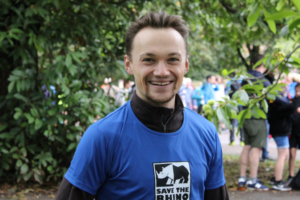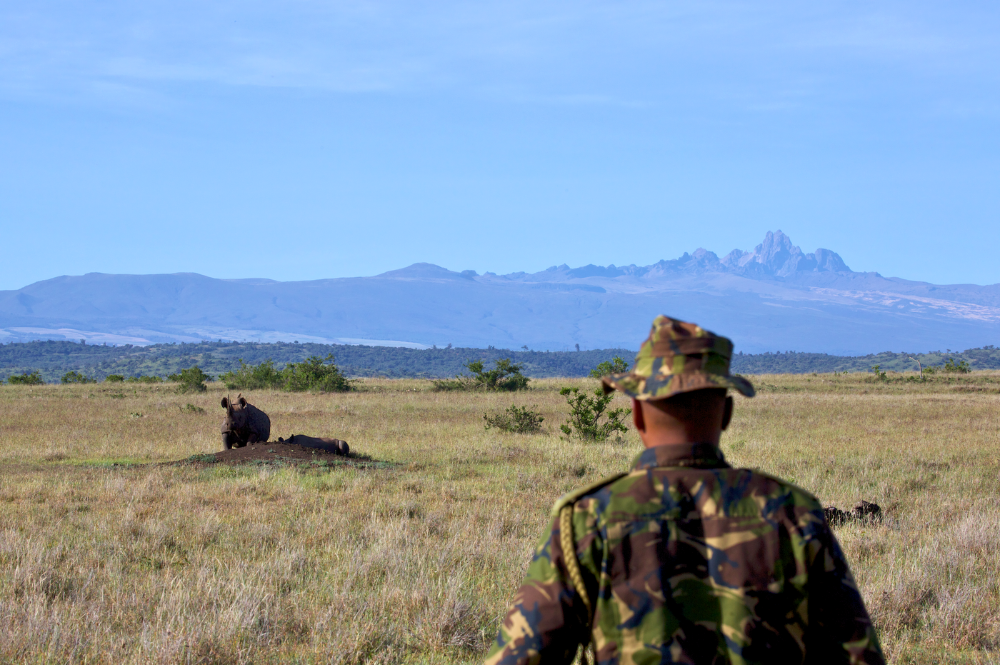This is part two of our three-part blog series on Project UPTICK. Read the first blog here.
Towards the end of 2015, a security audit of Kenya’s rhino areas (including private, community and state land) identified a number of strengths and weaknesses. As poaching syndicates tend to target those areas reckoned to be “soft”, the assessment recommended that security capability and capacity should be matched across all rhino-bearing sites.
In September 2020, amidst the global COVID-19 pandemic and one of the worst droughts in recent memory, Project UPTICK was greenlit thanks to a grant of US $1,949,184.94 from the US Government’s Bureau of International Narcotics and Law Enforcement Affairs (INL). Three Conservancies (Ol Jogi, Lewa Wildlife and Borana), five rhino-bearing national parks (Tsavo West, Tsavo East, Lake Nakuru, Aberdare and Meru) and all the country’s eight regional Kenya Wildlife Service (KWS) headquarters (Western, Mountain, Tsavo, Southern, Coast, Central Rift, Northern and Eastern) were the focus of the grant for the first two years.
With vast distances to cover and few roads, aerial capacity is one vital component for Ol Jogi, Lewa Wildlife and Borana Conservancies. Looking down from above, herds of buffalo appear like dark specks of paint on a blank green canvas, but human activity is also evident, with stark differences across boundaries with neighbouring properties. Deep gullies and bare sands are a reminder of the damage that can be done when such landscapes are mismanaged.
In the first two years of UPTICK, flights were used for law enforcement reactions, including follow-ups with armed suspects involved in cattle banditry and full-moon flights after reports of suspected gangs gathering to poach rhinos; wildlife management, including searches for black rhinos that hadn’t been seen for three days (the critical sighting frequencies for rhinos on Conservancies), and rhino ear-notching operations; even helping to fight fires on the slopes of Mount Kenya. Despite these important activities, given the fuel use and expense, airtime was used sparingly. During the second year, Ol Jogi used its fixed-wing aircraft for an average of 5.7hrs per month.
Uniforms, whilst seemingly basic, are another necessity for rangers working throughout these landscapes. Obtaining quality uniforms means that rangers can carry out their duties in relative comfort in all that the rugged Kenyan bush can throw at them. Project UPTICK enabled the purchase of an extensive shopping list (all in jungle green or camo, of course): heavy jackets, trousers, shirts, bush hats, ponchos, belts, woollen gloves and woollen hats, as well as boots and custom-made protective covers for CamelBak hydration packs.
Enhancing communications was also important, with Lewa’s team receiving a new set of digital radios to improve the instant connection between people in the field and the Joint Operations Command Centre. In total, 58 hand-held radios, 11 base-set radios, one repeater and other associated equipment were purchased. As well as boosting communications, the kit also supports security, with secure channels and functionality to isolate and turn off radios remotely, if needed. The radios also include a panic button, immediately sharing the user’s location to get help to arrive quickly. This equipment has been divided between the General Security and Anti-Poaching teams, giving them 24/7 communications and improving coordination for proactive and reactive emergency deployments.
The variety of equipment purchased thanks to INL funding has been critical for boosting the confidence and welfare of rangers whilst they carry out their essential work. Additionally, the combined and collaborative approach has enabled all three Conservancies to buy equipment in bulk, getting better prices and guaranteeing common standards.
But these were not all that Project UPTICK had to offer. Extensive training opportunities and the equipping of Operations Rooms to operate software platforms such as EarthRanger™ have also been instrumental in bolstering security capacity. The effectiveness of this Project in the first two years meant there were calls to expand the work into other protected areas of Kenya.
And expand it did.
In September 2022, a grant extension was secured by Save the Rhino, which enabled the Project to continue for a further two years and incorporate new areas. In Part three, we will delve into how training sessions with 51 Degrees (a conservation security training partner) and the roll-out of such software packages as EarthRanger™ have impacted the rhino landscapes of Kenya and detail the progress made across four years of Project UPTICK.








